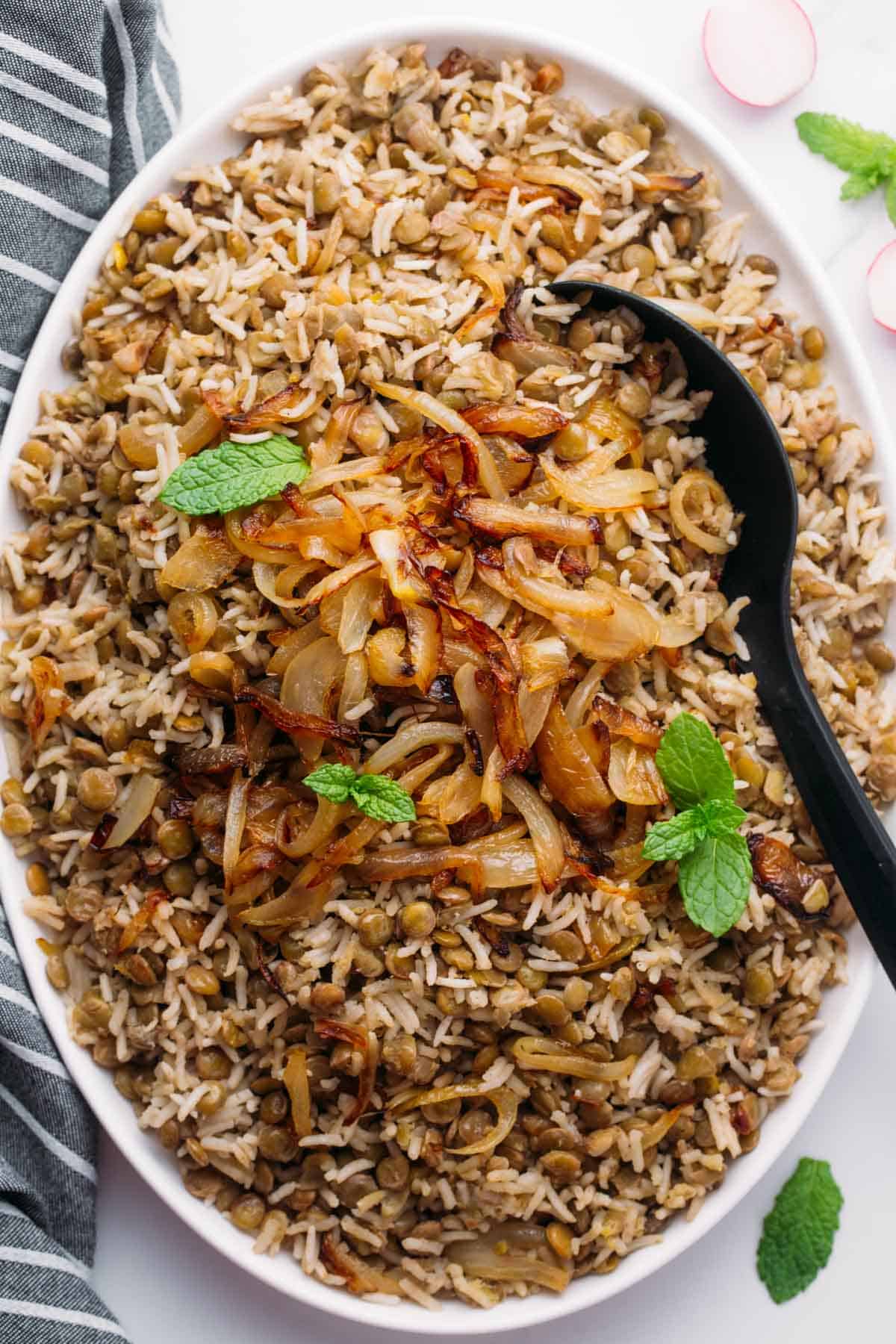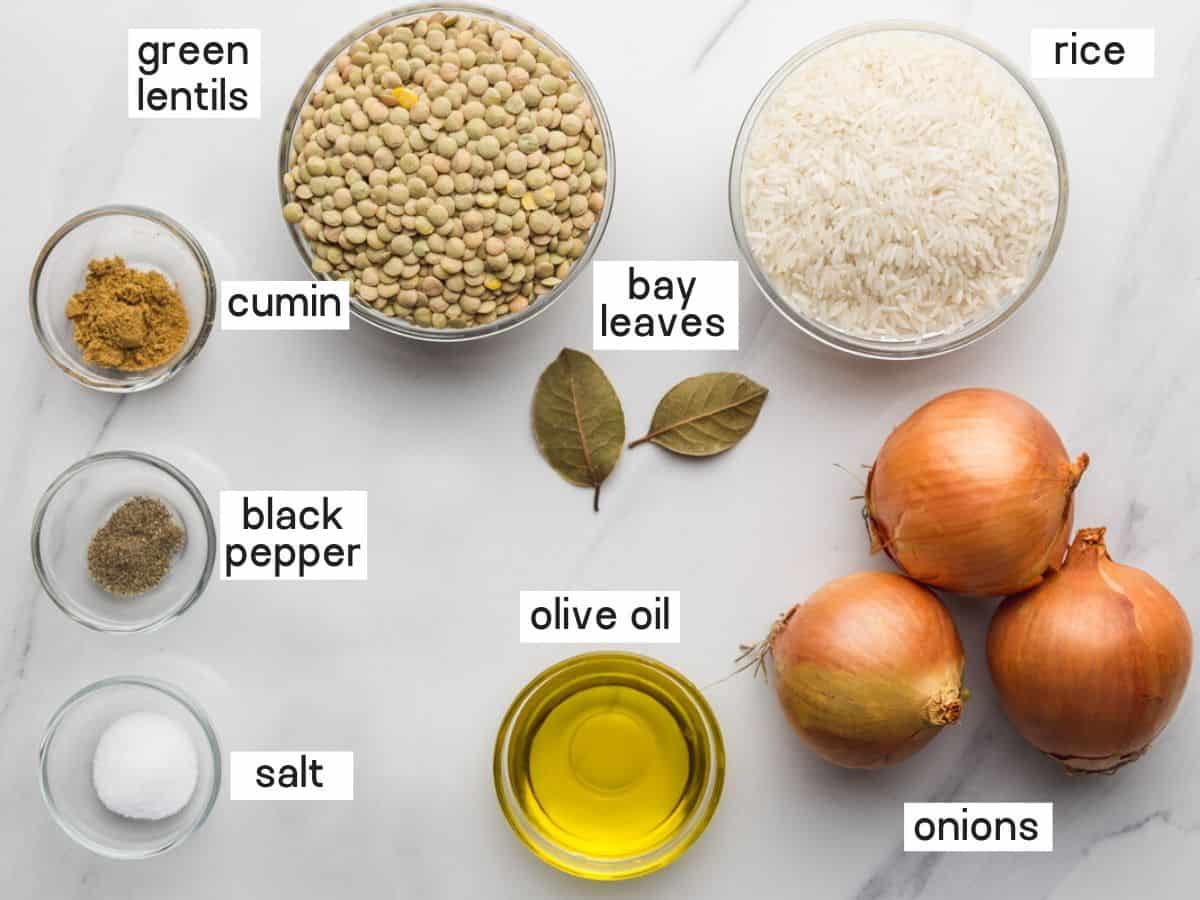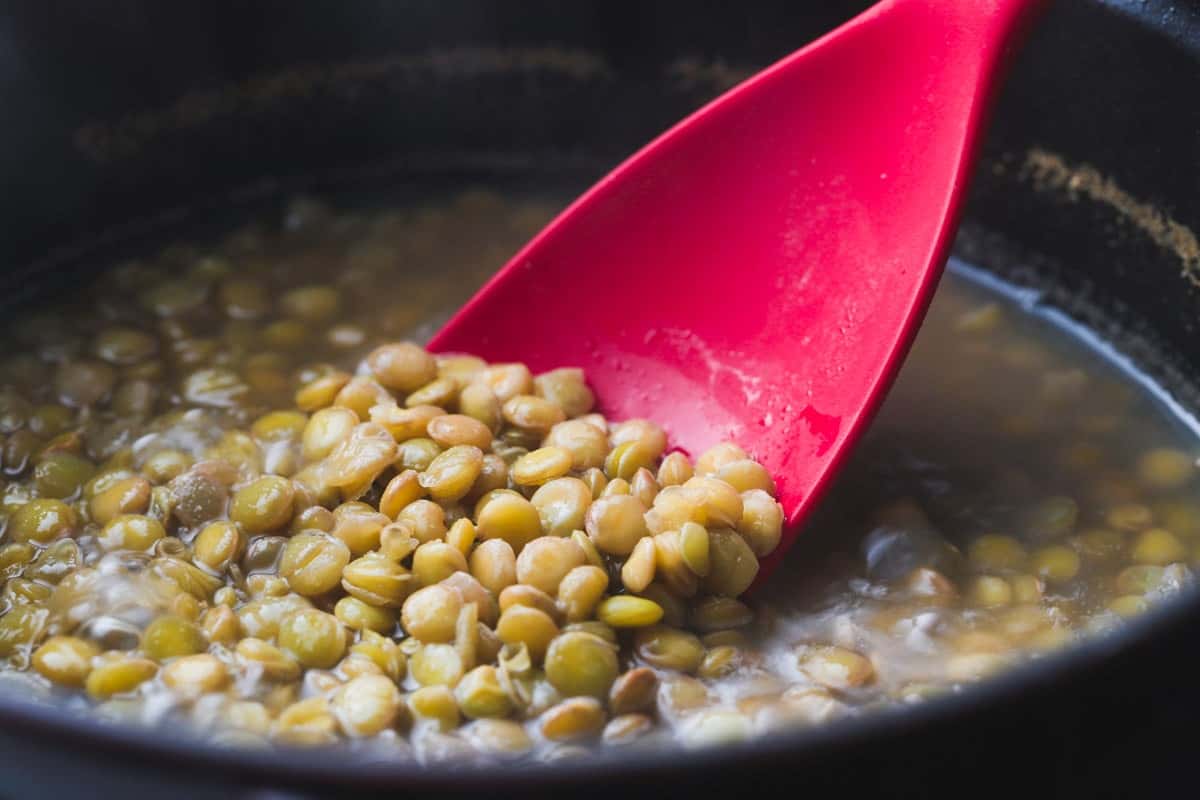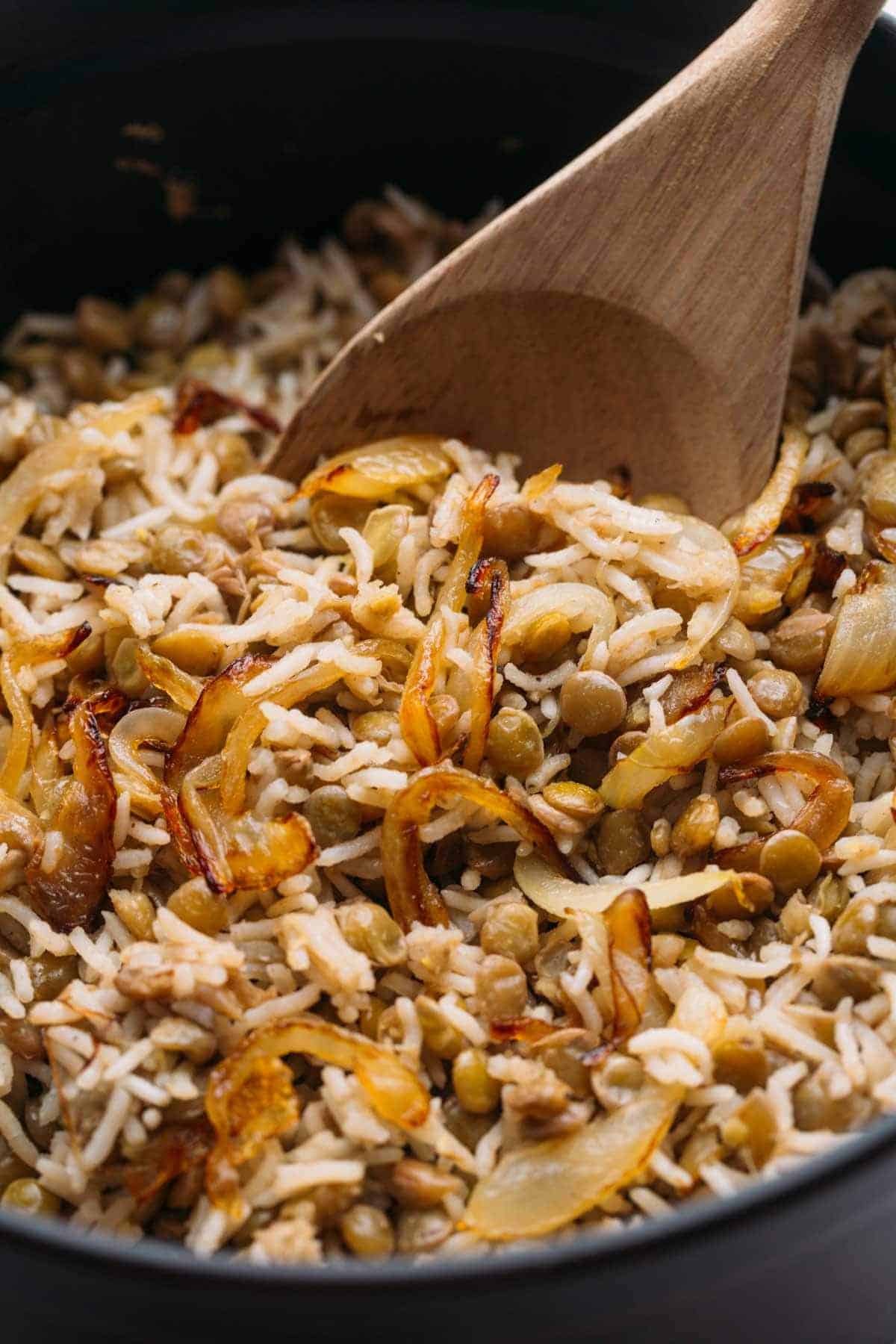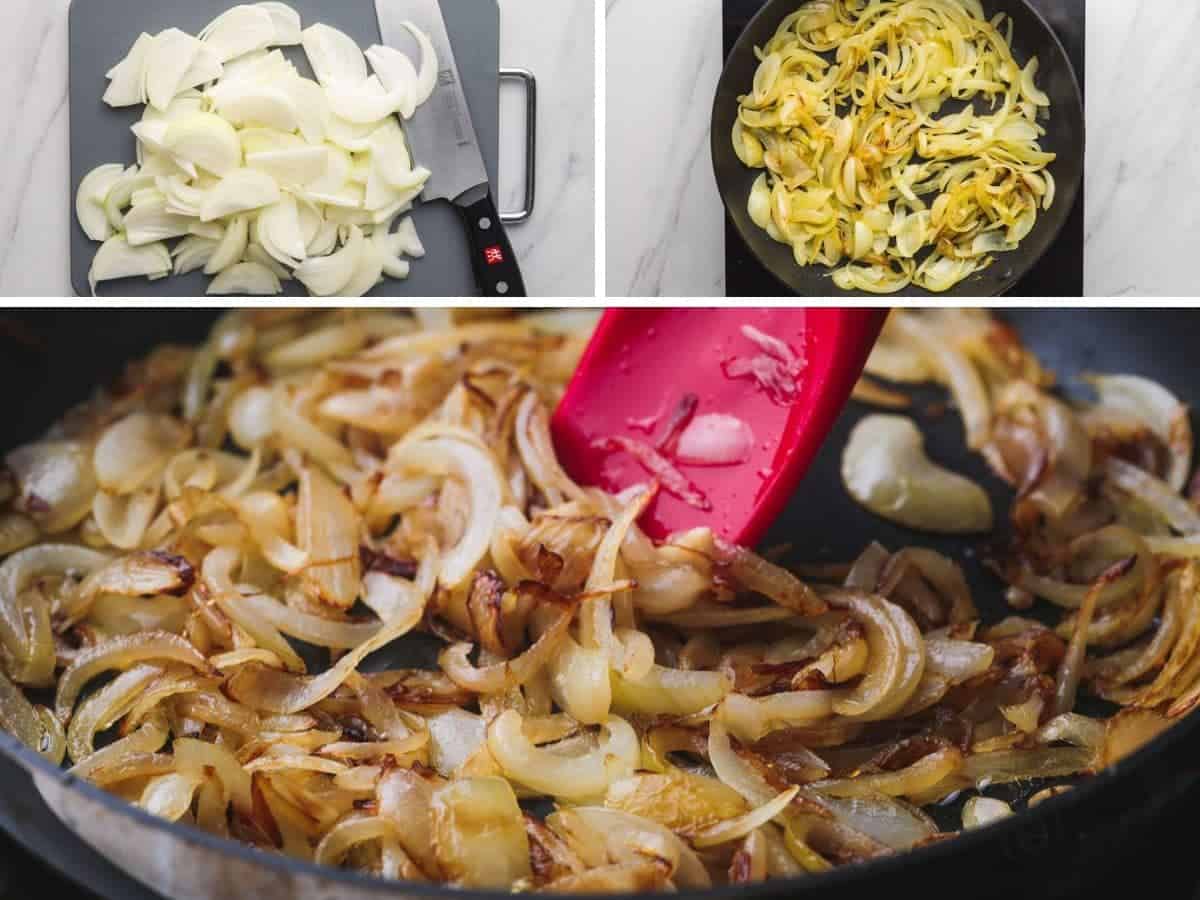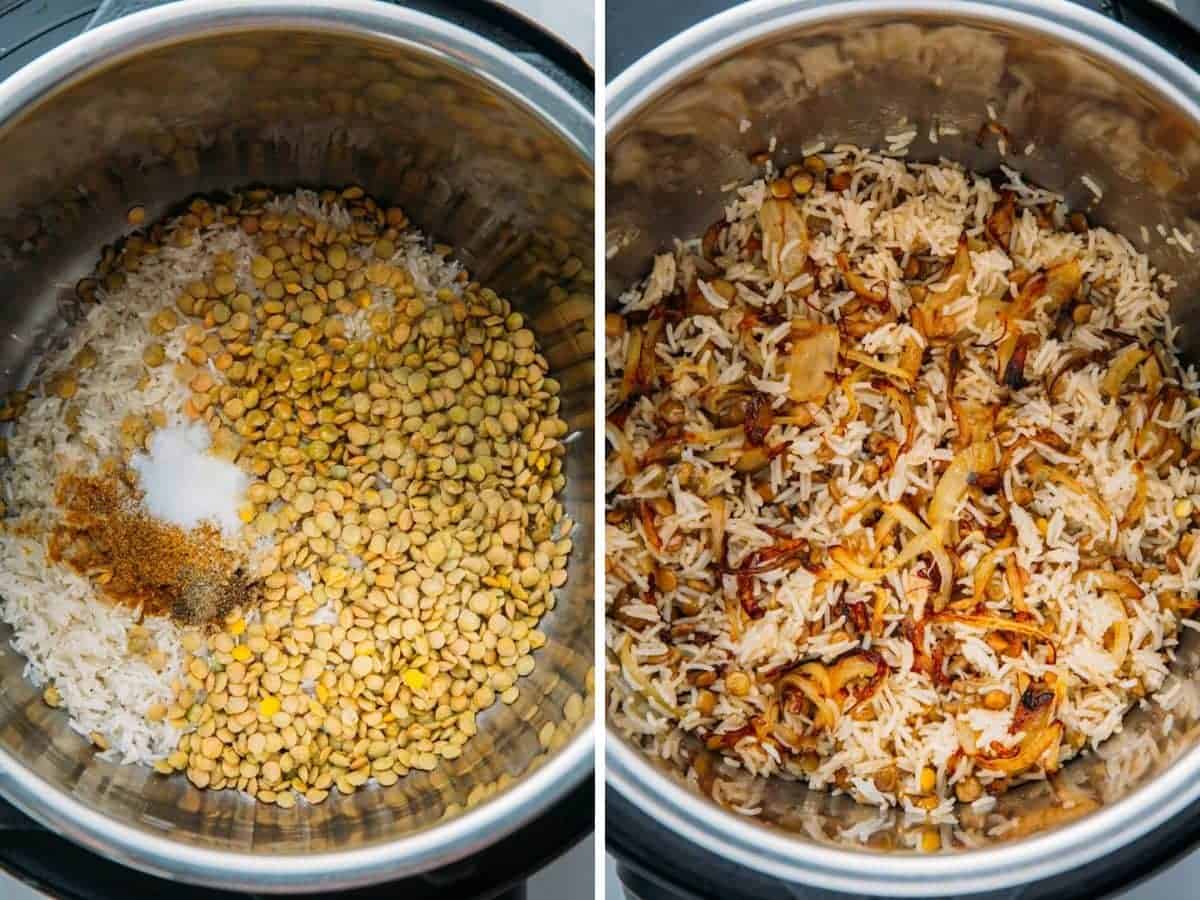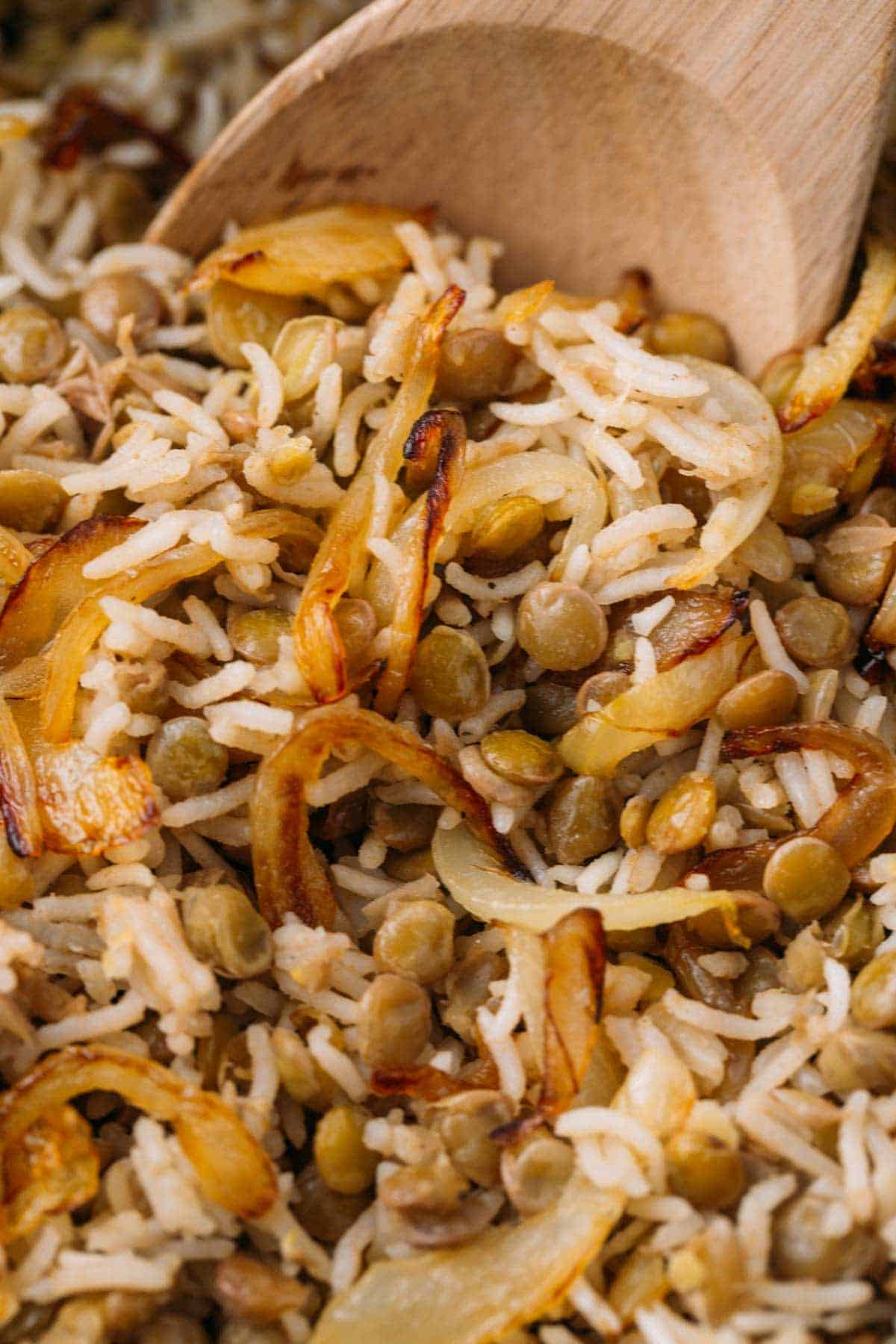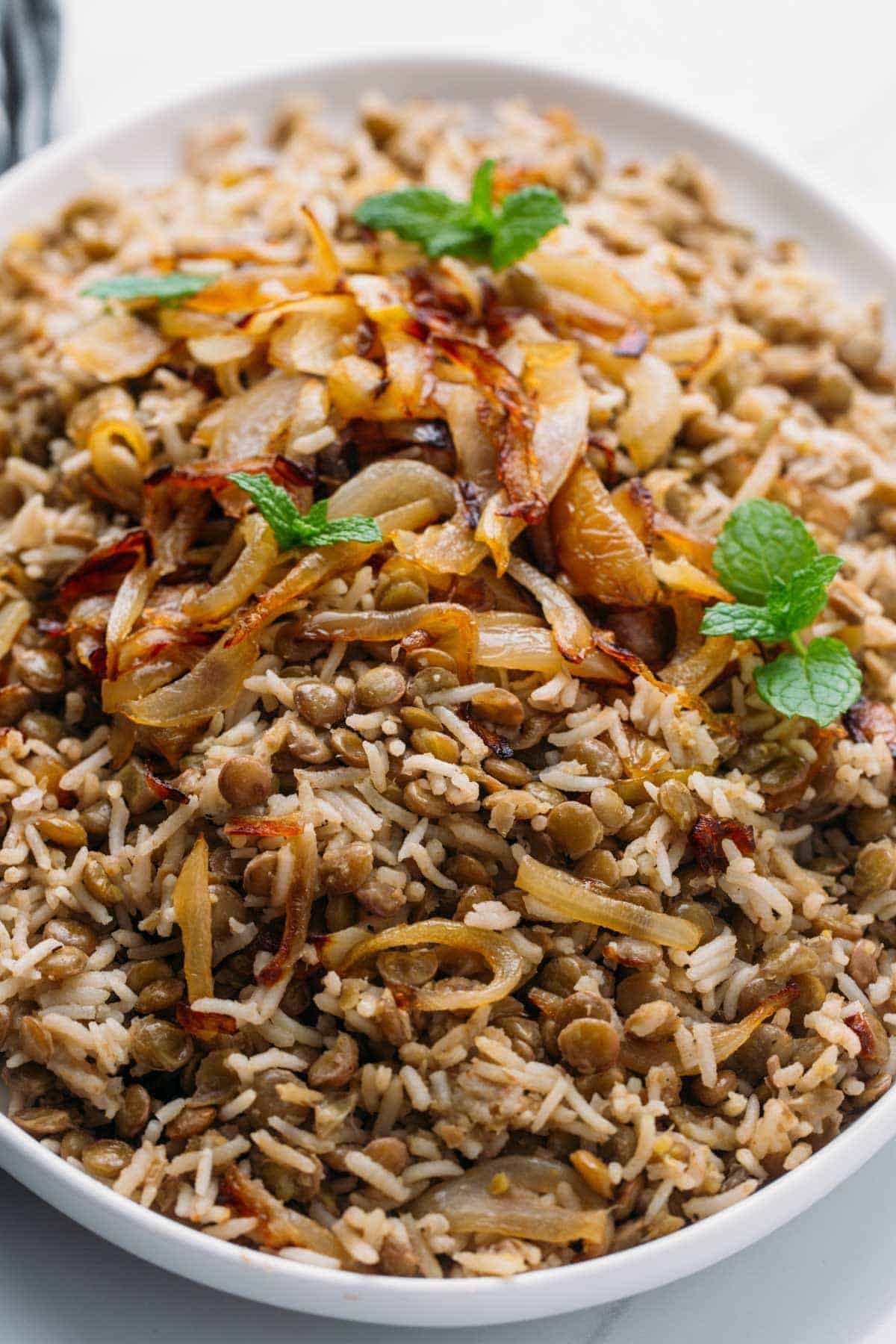What is Mujadara
Mujadara or Mujaddara, also known as Mudardara – is a Middle Eastern rice and lentil dish. This dish has a few variations, but the most popular one is made with rice and lentils. The lentils are cooked with ground cumin until they’re half cooked, then the rice is added and everything is cooked together. Caramelized onions are mixed in with the rice and lentils and also used as a topping (the more the better!). It is known as a poor man’s food because it is plant-based and really frugal. But it’s a great option that is served on a meat-free day that all families cook at least once a fortnight. As I grew up in the Middle East, I ate and still eat lots of Mujadara, as well as other vegan hearty dishes that you probably already know, like baba ganoush, mutabbal, falafel, foul mudammes, and fasolia bi zeit. It’s a simple and filling meal that everyone knows and loves in Jordan. There are many versions of this dish, and the way it’s made can be different from one family to another. My version here is the most authentic Middle Eastern version, simplest, healthiest, and the most delicious. It requires just a few ingredients and less than 30 minutes.
The Ingredients
You will only need 8 pantry staples to make this simple Middle Eastern dish:
Lentils – you can either use brown or green lentils to make mujadara. Red lentils do not work. Rice – the most popular rice for this dish is Calrose or basmati (my Mother uses Calrose), but brown rice can also work. Olive oil – the Arabs say that it’s all in the olive oil when it comes to this dish, and trust me, high-quality olive oil can take this dish to the next level. Seasonings: ground cumin, bay leaves, black pepper, and salt. Yellow onions – you will need at least 3 onions. There’s no such thing as too many onions when it comes to Mujadara.
How to Make Mujadara?
First, you will need to soak the rice and wash the lentils. This step is crucial to ensure that the lentils and rice are clean. It will also help the rice become fluffy rather than clumpy. Add the lentils to a pot, cover with water (for 1 cup of lentils, add 3 cups of water). Season with ground cumin and baharat if using, and throw in a couple of bay leaves. Cover the pot with the lid, bring to a boil, and simmer for 5-15 minutes. The time varies depending on what kind of lentils you’re using, so you have to keep checking every 5 minutes until the lentils are almost cooked but still firm as they will cook longer with the rice.
When the lentils are looking fine (see image above), add the rinsed and drained rice, and add more water just to cover the rice (I can’t give you the exact measurement as it depends on how much of the water evaporated as you cooked the lentils, so use your best judgment). Season with salt, and pepper. Cover with the lid, bring to a boil, then reduce the heat to the lowest possible and cook for 10-12 minutes undisturbed without removing the lid. In the meantime, caramelize the onions (see instructions below). Remove the lid, and check if all of the water has evaporated, and that the rice is cooked. If it needs to cook further, add a splash of water, and cook for longer. When the mujadara is done, remove the lid, give the lentils and rice a quick stir then stir in half of the caramelized onions. Keep the rest of the onions for serving.
How to Caramelize Onions?
Now, the most important part is caramelizing the onions! This step is usually done after the rice is added to the lentils and cooked. Peel and slice the onions into half-moons, the thickness of the slices should be around 1/5-inch. Try to slice the onions into even slices as much as possible to ensure that they cook evenly. Add 3 tablespoons of olive oil to a skillet or non-stick pan. Heat it on medium heat, then add the onions. Fry them for 10-15 minutes, or until the onions have lost their structure, become a caramel color, and start crisping up slightly. You have to be super patient, and not step away from the stove. Keep stirring regularly so that the onion slices are cooked evenly. Some people use other oils, such as corn, vegetable, or sunflower oil, and deep fry the onions to get them super crispy. I personally prefer shallow frying the onions in olive oil; it tastes better and is much healthier. For crispy onions (also popular in the Middle East for Mujadara), add a tablespoon of all-purpose flour as you fry the onions. Keep frying, and you’ll end up with golden crispy onions!
Video Tutorial
While this recipe is so easy to make, it always helps to watch a quick video, so watch it below!
Instant Pot Mujadara
If you’re a fan of the Instant Pot, you can cook this dish in your pressure cooker. It’s quicker than the stovetop version, and you dump all your ingredients in the Instant Pot immediately. But keep in mind that you will still have to caramelize the onions separately in a pan over the stove. You do NOT want to skip this step, as 50% of the flavor in this dish comes from the caramelized onions and the olive oil.
Rinse the lentils and add them to the Instant Pot stainless steel insert with 2 cups of water. Season with ground cumin and baharat, if using, and throw in a couple of bay leaves. Secure the lid and set the vent to SEALING. Select the PRESSURE COOK/MANUAL setting and set the cooking time for 2 minutes at high pressure. When the cooking time ends, quickly release the steam. Remove the lid and add the rinsed and drained rice, olive oil, salt, and pepper. Add water just to cover the rice and lentils (not more!). Secure the lid and set the vent to SEALING. Select the PRESSURE COOK/MANUAL setting and set the cooking time for 4 minutes at high pressure. The Instant Pot will take around 6-7 minutes to come to pressure and start cooking. When the cooking program ends, allow the steam to be naturally released for 15 minutes, then manually release the rest. Carefully remove the lid, fluff the lentils and rice with a fork, and mix in the caramelized onions.
How to Serve Mujadara?
Mujadara is usually served as a main dish, unlike vermicelli rice where the rice is just a side dish. As for the presentation, it’s either served right from the pot straight to the plates. Or served in a large serving plate with lots of caramelized onions on top, and perhaps a few green leaves (I use mint). On the side, serve mujadara with plain natural yogurt or a cucumber yogurt sauce (Khyar bi Laban), and/or a Shirazi salad. The salad of choice is often the Arabic peasant’s salad which consists of cucumbers, tomatoes, yellow onion, fresh parsley leaves, olive oil, lemon juice, and salt. The salad is chopped either roughly or finely. For the recipe, check out my Shirazi salad. You can also serve a few slices of fresh radishes, and some pickles on the side.
Variations
The major difference between mujadaras made by different families is the ratio of lentils to rice. We usually do 1:1, and it’s the best ratio, in my opinion. Another popular version is Bulgur Mujadara, which is made with bulgur and lentils instead of rice and lentils. Coarse bulgur is used and cooked the same way as the rice version. A healthier version can be made using brown rice instead of white rice, but it must be cooked longer.
Storing Tips
Store the leftovers in the fridge in a sealed container for up to 4 days. Reheat in the microwave, or in a pot over the stovetop on medium heat until heated through. I hope you love this authentic Mujadara recipe as much as I do! If you try it, please share your thoughts in the comments box below. I love hearing from you! This recipe first appeared on Little Sunny Kitchen on December 15th, 2013. It was updated with new images and more information on April 11th, 2020. The recipe remained the same. © Little Sunny Kitchen


